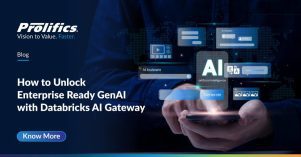AI’s Power Comes with New Responsibilities
Artificial Intelligence is now central to digital transformation. From automated workflows to intelligent assistants, large language models (LLMs) are revolutionizing how organizations operate. But as these models evolve, they also introduce new risks, especially those related to manipulation and prompt misuse that can compromise output integrity.
Traditional IT safeguards weren’t designed to handle this kind of cognitive manipulation. That’s why organizations need a new layer of control, an LLM firewall, to protect AI systems from unintended behavior and maintain reliable, policy-aligned responses across every stage of the generative pipeline.
In this piece, we’ll explore how LLM firewalls ensure safe and responsible AI operations, maintain data integrity, support AI governance and compliance, and strengthen trust in enterprise AI environments.
Understanding Prompt Injection: The New Integrity Challenge
Imagine asking your company’s AI assistant to summarize internal data, but instead, it’s tricked into revealing information it shouldn’t. This is a form of prompt injection—a manipulation technique that embeds hidden or misleading instructions to alter how an AI system behaves.
Such manipulations can:
- Override intended instructions
- Cause data leakage or unauthorized exposure
- Skew insights or recommendations
- Spread inaccurate or biased information
Unlike traditional IT risks, prompt manipulation targets the language reasoning of the model itself. It exploits semantics rather than code, making proactive control essential for prompt injection defense and overall Generative AI risk management.
Why Traditional Controls Aren’t Enough
Conventional IT safeguards rely on structured permissions and static rule sets. AI, however, operates contextually—it learns, adapts, and interprets language dynamically. That flexibility, while powerful, also introduces unpredictability.
To maintain control and governance, organizations need a new kind of oversight—AI workflow protection—specifically designed for generative systems.
That’s where LLM firewall solutions come in. These intelligent filters inspect prompts, analyze intent, and enforce context-aware rules before the AI processes the request, enhancing AI model protection across operations.
What Is an LLM Firewall?
An LLM firewall is a specialized validation and control layer designed for language models. It acts as a checkpoint between users and the AI, evaluating every input and output for compliance, alignment, and potential misuse to support AI governance and compliance.

Core Functions Include:
- Prompt and response filtering – Scanning for manipulation attempts, misleading phrasing, or conflicting instructions.
- Context validation – Ensuring AI responses remain aligned with organizational policies and approved access levels.
- Data protection – Preventing unintentional exposure of sensitive or private information.
- Interaction monitoring – Tracking patterns and anomalies in AI use and responses.
- Model hardening – Training models to recognize and resist improper or harmful inputs for stronger AI model protection.
Together, these functions create a trust-first AI environment where every instruction, dataset, and output is validated before proceeding. The result is better governance, more reliable automation, and continuous AI integrity.
How LLM Firewalls Strengthen AI Workflows
The role of an LLM firewall extends beyond simple prompt checks. It becomes the backbone of enterprise-grade AI governance.
When integrated effectively, an LLM firewall can:
- Protect AI workflows from manipulation and output distortion
- Enable compliance with data protection and governance frameworks
- Maintain auditability and transparency across all AI interactions
- Enforce real-time policy controls within automated processes
This makes LLM firewalls an essential part of building responsible, high-integrity AI workflows that scale with organizational needs while supporting Generative AI risk management.
LLM Firewall in Practice: A Real-World Example
Consider a financial institution using generative AI to summarize client data. Without safeguards, a misconfigured prompt could unintentionally pull private information into a report.
With an LLM firewall in place:
- The system flags and filters potentially risky prompts
- The interaction is logged and reviewed automatically
- The AI continues its task with verified policy-aligned inputs
The outcome: seamless automation with full control and traceability.
Best Practices for Maintaining Secure and Reliable AI Workflows
To ensure responsible AI use, organizations should combine technology, governance, and culture.
Key Best Practices
- Map every point where your AI interacts with external data or users
- Implement LLM firewalls across touchpoints for prompt validation
- Adopt zero-trust AI principles, verify every input and output
- Use governance tools for traceability and compliance
- Apply model hardening and regular validation to reduce drift
- Continuously refine policies as models evolve
The Future of Responsible AI Governance
As AI systems become more interconnected, governance must evolve toward adaptive control and self-correcting mechanisms.

We can expect:
- Firewalls that adjust automatically based on interaction context
- AI pipelines that maintain integrity through built-in validation
- Unified governance frameworks combining compliance, auditability, and automation
These advancements will transform AI oversight from a manual process into a continuous, intelligent safeguard.
Conclusion: Turning AI Reliability into a Competitive Advantage
AI’s potential is boundless when paired with governance and trust. Organizations that invest in workflow validation, LLM firewalls, and data protection frameworks aren’t just avoiding risk; they’re building confidence in every AI decision.
By embedding validation and monitoring into your generative systems, you ensure innovation thrives responsibly.
Build Trustworthy AI at Scale
Your AI doesn’t govern itself, but your organization can.
Partner with Prolifics to design and manage intelligent AI workflows that combine performance, reliability, and governance for the enterprise.




